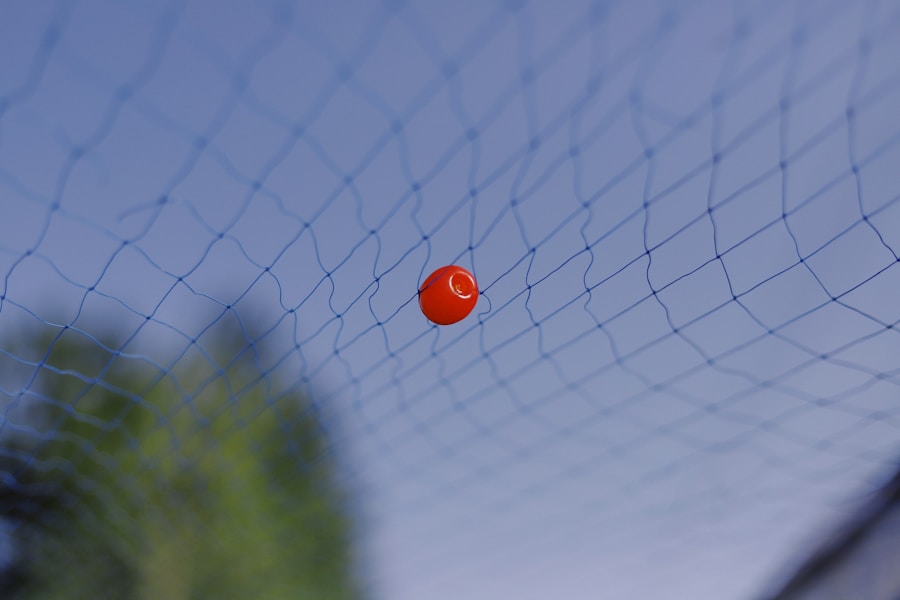Download links
How to install The Science of Bouncing Ball Dynamics APK?
1. Tap the downloaded The Science of Bouncing Ball Dynamics APK file.
2. Touch install.
3. Follow the steps on the screen.
Description
The behavior of a bouncing ball is a fascinating interplay of physics principles, primarily governed by Newton’s laws of motion. When a ball is dropped from a height, it accelerates towards the ground due to gravity, which exerts a force on it. This acceleration continues until the ball makes contact with a surface, at which point the dynamics shift dramatically.
Upon impact, the ball deforms slightly, storing potential energy in the form of elastic potential energy. This energy is then converted back into kinetic energy as the ball rebounds, propelling it upward. The height to which the ball bounces is influenced by several factors, including the initial drop height, the material properties of the ball, and the characteristics of the surface it strikes.
The motion of a bouncing ball can be described using concepts such as momentum and energy conservation. When the ball hits the ground, it experiences a change in momentum, which is transferred to the surface. The interaction between the ball and the surface can be analyzed through the lens of impulse, which is defined as the change in momentum resulting from a force applied over a period of time.
The efficiency of this energy transfer is crucial; ideally, a perfectly elastic collision would result in no loss of energy, allowing the ball to reach its original height.
Key Takeaways
- Bouncing balls follow the laws of physics, including the conservation of energy and momentum.
- Factors such as air resistance, surface material, and elasticity affect the dynamics of bouncing balls.
- Elasticity plays a crucial role in determining how high a ball bounces and how much energy is lost during the bounce.
- The surface material of the ground or the ball itself can significantly impact the performance of a bouncing ball.
- The relationship between the height a ball bounces and its initial drop height can be described using the principles of energy conservation and gravitational potential energy.
- Bouncing ball dynamics are applied in sports equipment design, engineering of shock-absorbing materials, and the development of ball sports techniques.
Factors Affecting Bouncing Ball Dynamics
The Role of Mass and Shape
The mass of a ball behaves when it bounces plays a significant role in determining how much kinetic energy it possesses when dropped. A heavier ball will have more momentum upon impact compared to a lighter one, assuming they are dropped from the same height. The shape of the ball can also influence its aerodynamics; for instance, a perfectly spherical ball will experience different air resistance compared to one that is slightly oblong or irregularly shaped.
The Impact of Temperature
The temperature of both the ball and the surface can also significantly affect bouncing dynamics. As temperature increases, many materials become more pliable and elastic. A rubber ball may bounce higher when warmed up compared to when it is cold. This phenomenon is particularly relevant in sports; players often warm up their equipment before games to ensure optimal performance.
Environmental Factors
Furthermore, environmental factors such as humidity and altitude can alter air density, which in turn affects how much drag the ball experiences during its flight. These variables create a complex web of interactions that dictate how effectively a ball will bounce.
The Role of Elasticity in Bouncing Ball Behavior

Elasticity is a fundamental property that determines how well a material can return to its original shape after being deformed. In the context of bouncing balls, elasticity is crucial for understanding how energy is conserved during impact. A highly elastic material will deform less upon impact and will efficiently convert stored potential energy back into kinetic energy as it rebounds.
For instance, a tennis ball made from rubber exhibits high elasticity, allowing it to bounce effectively on various surfaces. In contrast, a ball made from less elastic materials may absorb more energy during impact and fail to rebound as high. The coefficient of restitution (COR) is a key metric used to quantify elasticity in bouncing balls.
It is defined as the ratio of the speed after impact to the speed before impact.
For example, a basketball typically has a COR around 0.7 to 0.8, meaning it retains about 70-80% of its kinetic energy after bouncing.
Understanding these properties allows engineers and designers to create balls tailored for specific sports or applications by selecting appropriate materials that optimize performance.
The Influence of Surface Material on Bouncing Ball Performance
| Surface Material | Height of Bounce (inches) | Rebound Efficiency (%) |
|---|---|---|
| Concrete | 12 | 70% |
| Wood | 15 | 80% |
| Rubber | 18 | 90% |
The surface on which a ball bounces plays an equally critical role in determining its performance characteristics. Different materials exhibit varying degrees of hardness and texture, which can significantly affect how much energy is absorbed during impact and how high the ball rebounds. For instance, a hard surface like concrete will provide minimal energy absorption compared to a softer surface like grass or sand.
When a ball strikes a hard surface, it tends to bounce higher because less energy is lost in deformation; conversely, softer surfaces tend to absorb more energy, resulting in lower bounce heights. Moreover, surface texture can also influence frictional forces acting on the ball during its bounce and subsequent roll or slide. A rough surface may create more friction, potentially slowing down the ball after it bounces and affecting its trajectory.
In contrast, smooth surfaces allow for less frictional resistance, enabling faster movement post-bounce. This interplay between surface characteristics and ball dynamics is particularly evident in sports like basketball or tennis, where players must adapt their techniques based on court surfaces—wooden floors versus clay courts can lead to vastly different playing experiences.
The Relationship Between Bouncing Height and Initial Drop Height
The relationship between the height from which a ball is dropped and the height it reaches after bouncing is not linear but rather exponential in nature due to energy losses during impact. When a ball is dropped from an initial height \( h_0 \), it converts gravitational potential energy into kinetic energy as it falls. Upon hitting the ground, some of this kinetic energy is lost due to factors such as air resistance and internal friction within the material of the ball itself.
Consequently, the height \( h \) that the ball reaches after bouncing can be expressed as a fraction of \( h_0 \), often represented by \( h = e \cdot h_0 \), where \( e \) is the coefficient of restitution. For example, if a basketball is dropped from a height of 2 meters and has a COR of 0.75, it will bounce back to approximately 1.5 meters (0.75 times 2 meters). This relationship illustrates that while increasing the drop height will generally lead to higher bounce heights, each successive bounce will yield diminishing returns due to energy losses inherent in real-world conditions.
This principle has practical implications in sports training and equipment design; understanding these dynamics allows athletes to optimize their performance by selecting appropriate techniques based on expected bounce behavior.
Applications of Bouncing Ball Dynamics in Sports and Engineering

The principles governing bouncing balls have far-reaching applications beyond recreational activities; they are integral to various fields such as sports science and engineering design. In sports like basketball or volleyball, understanding how different balls interact with various surfaces can inform training regimens and equipment choices. Coaches often analyze bounce dynamics to develop strategies that maximize player performance based on court conditions—knowing how high a basketball will bounce on different surfaces can influence shooting techniques or defensive positioning.
In engineering contexts, insights gained from studying bouncing balls are applied in designing products ranging from shock absorbers in vehicles to safety equipment like helmets and padding for athletes. Engineers utilize knowledge about elasticity and impact dynamics to create materials that effectively dissipate energy during collisions or falls, thereby enhancing safety features in various applications. For instance, modern sports helmets are designed with materials that absorb impact forces efficiently while maintaining comfort and usability for athletes.
Furthermore, advancements in technology have led to sophisticated simulations that model bouncing dynamics under various conditions. These simulations allow researchers and engineers to predict how new materials or designs will perform without needing extensive physical testing. By leveraging computational models that incorporate principles of physics related to bouncing balls, innovations can be developed more rapidly and effectively across multiple industries.
In summary, the study of bouncing balls encompasses an intricate blend of physics principles that govern their behavior upon impact with surfaces. From understanding elasticity and material properties to analyzing environmental influences and practical applications in sports and engineering, this field offers valuable insights that extend well beyond simple recreational activities.
If you’re interested in learning more about the physics behind bouncing balls, check out this article on Taya365’s tips for winning the jackpot. Understanding the mechanics of how balls bounce can help you strategize and improve your chances of success in games like lottery. So, take a break from bouncing balls and dive into the world of lottery winnings with Taya365’s expert advice.
FAQs
What is a bouncing ball?
A bouncing ball is a small, round object that is designed to rebound off of surfaces when dropped or thrown.
What is the science behind a bouncing ball?
The science behind a bouncing ball involves the transfer of kinetic energy from the ball to the surface it bounces off of, causing it to rebound.
What materials are bouncing balls typically made of?
Bouncing balls are typically made of rubber or similar elastic materials that allow them to rebound when they come into contact with a surface.
What are some common uses for bouncing balls?
Bouncing balls are commonly used as toys, in sports such as basketball and tennis, and in various physics experiments to demonstrate principles of motion and energy transfer.
How does the height from which a bouncing ball is dropped affect its bounce?
The height from which a bouncing ball is dropped affects its bounce by influencing the amount of potential energy it has when it makes contact with the surface, which in turn affects the height of its rebound.





